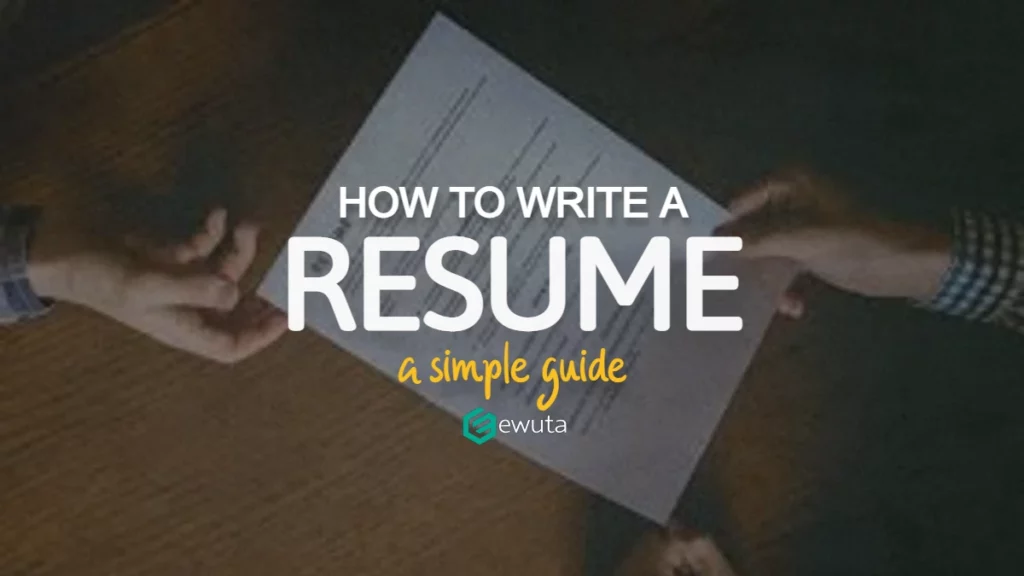When looking for employment, it is always important to create your resume. To do so, the usage of Word processing tools is a major option. But the use of online resume-building tools is no less effective. Offering ready-to-fill templates, these are both easy to use and save a lot of time.

1. Think foremost about its layout
Before reading your resume, your future collaborators will first look at its appearance. Hence, the importance of making a good impression and having a successful layout. In this sense, know that your resume must fit on a single page.
Afterward, you have to take into account the margins that let the space show through. Then, you have to keep in mind that pages filled with too many images and pictograms are also more attractive.
Then, you must also remember that an attractive resume does not have a lot of colors. Sure, you can color the title or the background or the text to stand out, but any excess is always bad.
Otherwise, to highlight the professional part of your resume more, you can use a larger font size on the section dedicated to this effect. However, you should use bold and italics sparingly and never underline.
And to help you in the best visual presentation to adopt, you can take inspiration from resume templates available on the web.
2. Select the appropriate resume type
As we are in the era of digitalization, the resume is also evolving in this direction. In this sense, there are different types of CVs today, including the video. And recruiters also have their preferences.
But in general, it is the classic ante chronological resume that is the most used. But to have the best, you must include the important information. And as a reminder, know that to have a successful resume, you need a neat layout and a concise header.
Also, add a specific resume title and a catchy phrase. You must also include your most essential professional experiences as well as your last diplomas. Also list your professional skills, your knowledge of foreign languages.
You must also indicate your computer skills as well as additional sections. Such as areas of interest, publications, and various certifications.
2. What about adding photos?
To add more interest to your resume, you should also consider adding a photo ID. But to have an efficient rendering, remember to respect certain criteria. Indeed, for a resume, it is above all advisable to use a professional photo.
In this sense, selfies, photos that were taken on vacation or in restaurants and nightclubs are not acceptable. You must use a clear, high-resolution photo. In the photo, your face should be straight and centered. You must also submit a photo where you smile and which has a plain background.
If you do not have such a photo, it is better not to put any at all. A photo that lacks seriousness may penalize you.
3. Don’t forget to include a resume hook
To impress potential recruiters, many candidates immediately jump to mentioning important experiences or diplomas. Thus, they forget to summarize their careers and experiences.
Indeed, you must include a heading dedicated to your person or some kind of introductory paragraph. You can then title it as Summary or Objective or About me. The goal is to create an attractive hook for your resume.
4. What interests to include in a resume?
An interest is something you like to do, an activity that you like or would like. You sometimes exercise it in your personal life, in your hobbies, and you ask yourself the question of making a job out of it or not!
Here are 10 areas of interest to put on your CV to stand out:
- Volunteers. The Centers of Interest section aims, in particular, to reflect the candidate’s personality.
- Sporting activities.
- Creative hobbies in the resume…
- Well-being and health.
- Music.
- Reading.
- Clubs and associations.
- Travels.
5. Your resume must arouse the interest of the recruiter!
In addition to being clean and tidy, your resume must hold the attention of the recruiter. Indeed, this one spends about 30 seconds reading a CV. That’s why it’s important to find a way to stand out! You can make a more aesthetic layout than simple lists and come up with a catchy title! Let your creativity express itself, but beware: within reason. There is no question of passing for a candidate who lacks seriousness.
Your CV is in a way the key to landing an interview! Take its writing and layout seriously to put the odds on your side when applying for a position.
6. Originality at all costs? Traps to avoid
If proposing an original and quality CV can help you stand out, this tool is a double-edged sword. Because originality in this situation involves a share of risk… You can indeed be read for a recruiter who does not like breaking codes, or for whom your CV will simply not be to his liking. In this case, chances are that your application will quickly end up in the trash.
It also depends on your field of activity: playing the original CV card for a job in advertising, digital communication or graphic design can allow you to stand out. On the other hand, it will probably be badly perceived in sectors such as health, legal, or insurance.
In addition, if your resume is in a different format (other than PDF or Word), it may require special software to view it. An element not to be overlooked if it is a video, a CV with animations, or an audio CV.
In any case, if you want to offer an innovative CV, always adapt its form to the position targeted. Do not forget to include the elements that interest the recruiter, in particular your last professional experiences and your training. Finally, make sure you are original: a CV that comes out of the traditional format, but which has already been seen and reviewed, is unlikely to be retained.




